A Brief History of the World…or 2 and 1/2 Days On-Site in Kentucky
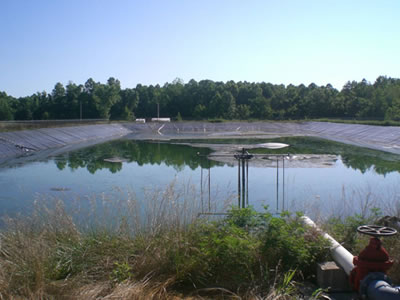 |
| On-site, view from the west |
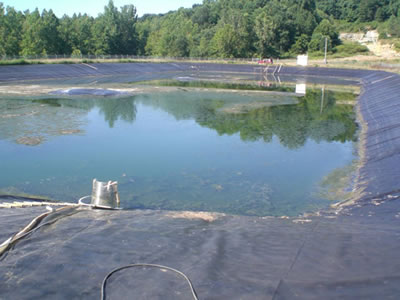 |
| On-site, view from the east |
 |
| Ian Peggs of I-CORP INTERNATIONAL |
The process used by Dr. Peggs is simple. The geomembrane liner is an insulator. He places a positive electrode in the lagoon, and a negative electrode on the fence.
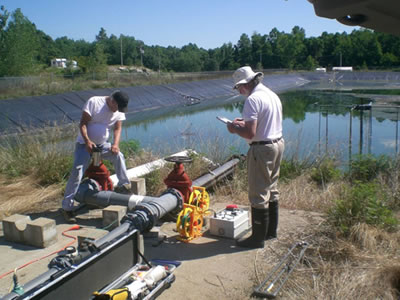 |
| Equipment set up and calibration |
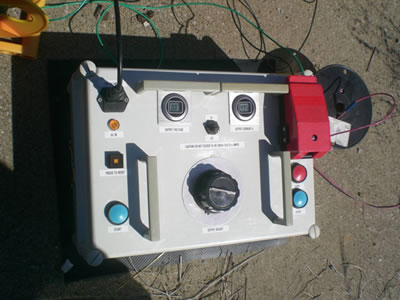 |
| DC current generator |
 |
| Negative electrode on fence |
He introduces a DC current of about 7 volts at about 500 milliamps to the positive probe. Any current loop flow is traveling through holes in the liner. The current flow in the area of a hole has a whirlpool effect he can detect. He has a probe with two electrodes (in an inverted “Y”) and traverses the lagoon in 5 ft patterns. As he closes in on a hole, it pegs his meter. As he approaches a hole, his signal increases, then fades, then increases again as the rear probe nears the hole.
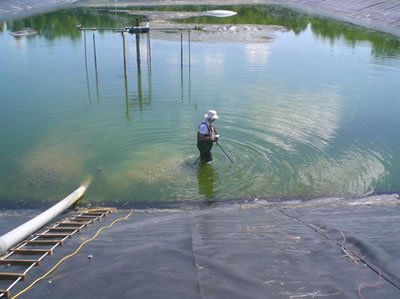 |
| Searching for current anomalies |
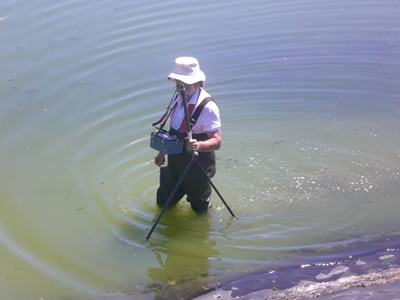 |
| Good view of fore and aft probes |
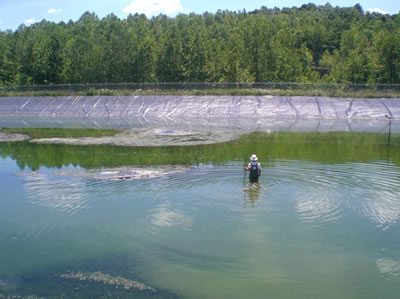 |
| Like walking "on a wet trampoline” |
Inspection is in two parts: the bottom of the lagoon which is subsurface, and the slopes above the water. For the slopes, he uses water pumped from a sump pump through a hose through a wand similar to a car wash wand. This wand has electrodes for monitoring current flow. When he is hosing the liner, any hole permits a new current flow which he can detect with his meter attached to the electrodes on the wand.
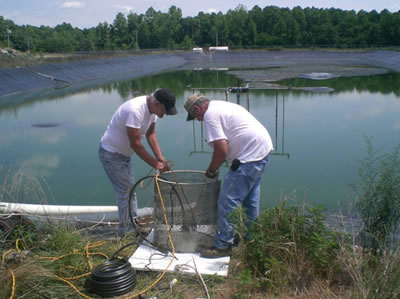 |
| Installation of sump pump for slope inspection |
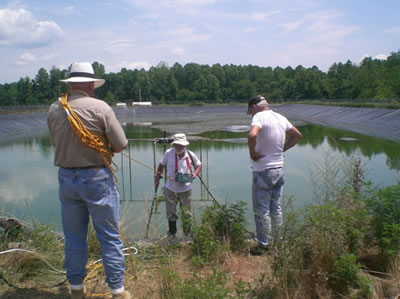 |
| Wand with current meter has replaced probes |
Dr. Peggs calibrated his instrument for standing water by disconnecting the ground wire from the fence and introducing a small wire into the edge of the water, simulating a 3 mm hole. He calibrated the wand system for the slopes by occasionally going to the top of the liner and introducing a small amount of water over the edge, making sure that small amount of water gave a signal.
The geomembrane contained seams about every 20.5 ft. We numbered these seams such as seam 3 East bank to document locations of leaks. All pipes and pump systems had to be inspected for metal to ground that would interfere with the low current flow. Pumps were determined to be connected to pvc, and thus not grounded. No direct water stream could be in process or it would interfere with the current.
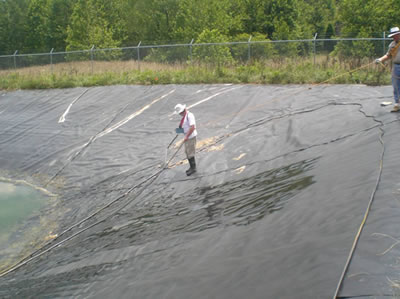 |
| Any hole > 1 mm sends signal through water wand |
The perils and physical demands were huge. Dr. Peggs said walking on the lagoon bottom was like trying to march on a wet trampoline. The slopes were quite slick, and my principal duties were to provide tension on the rope, and make notes of the nature and location of leaks. His physical exertion, patience, and tenacity were remarkable!
The results of the survey? Twenty leaks, including one burst whale, from a pinhole to an 18 in. disbond of an extrusion weld.
For more information on Leak Location technologies, please contact Ian Peggs, I-CORP INTERNATIONAL.











